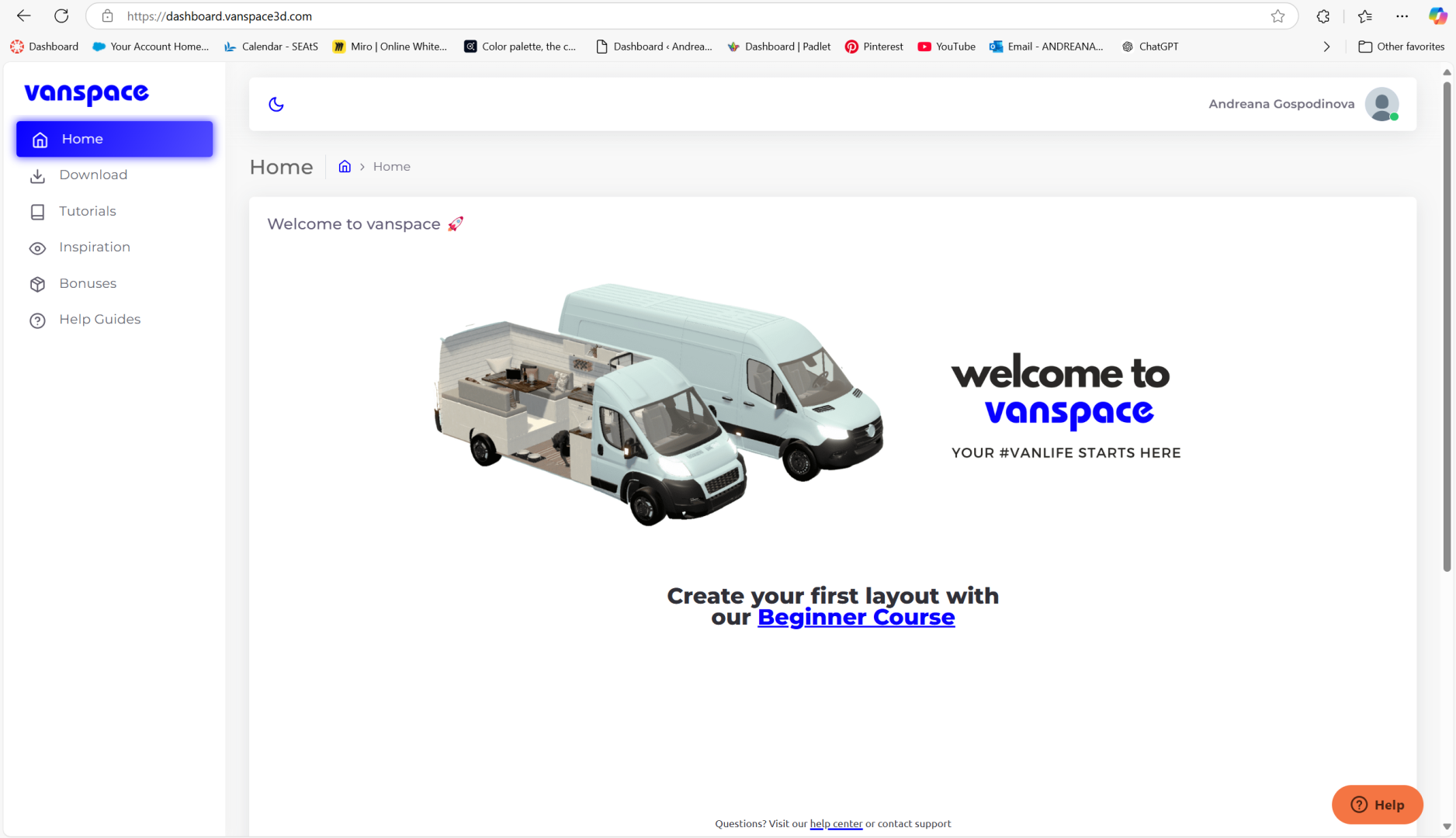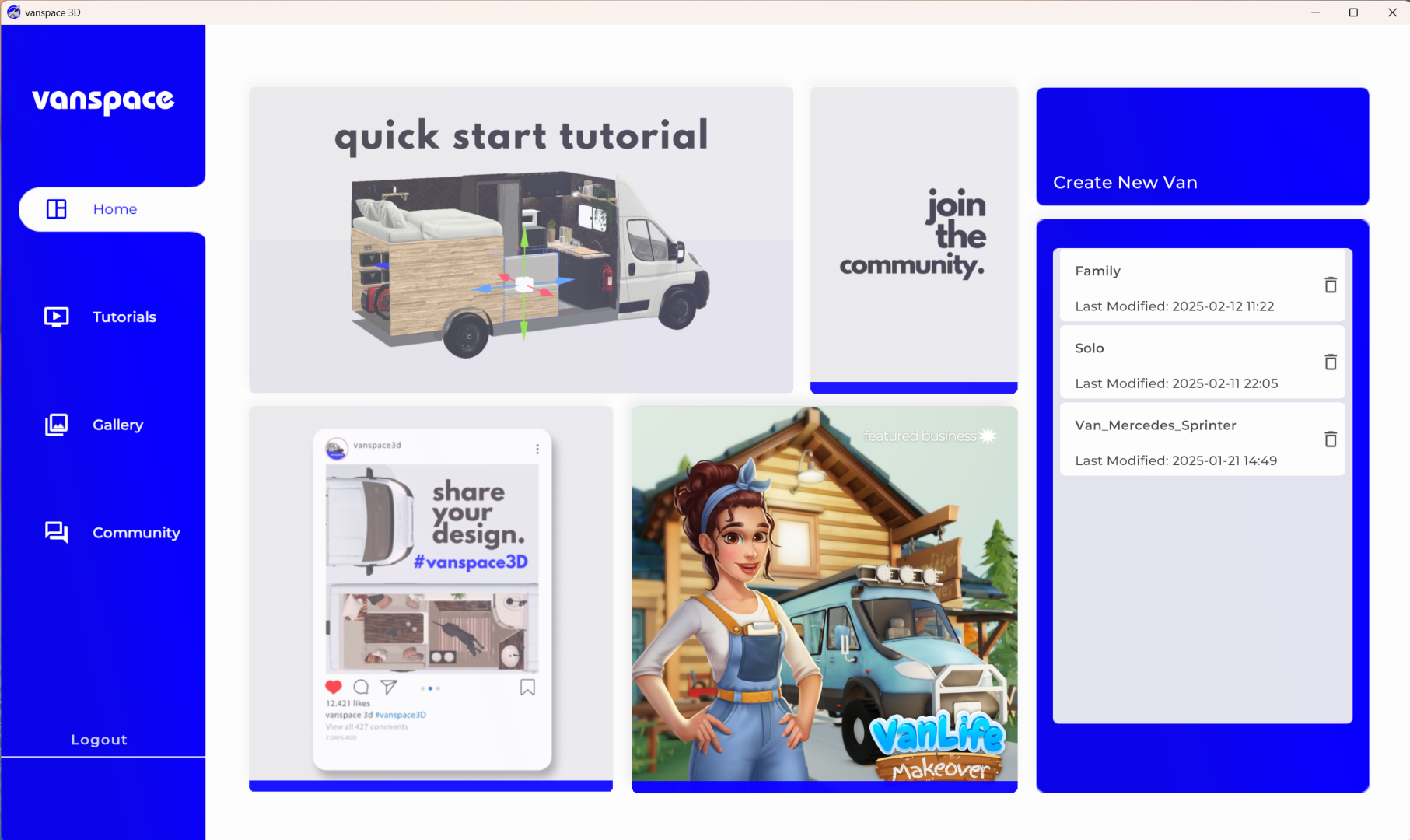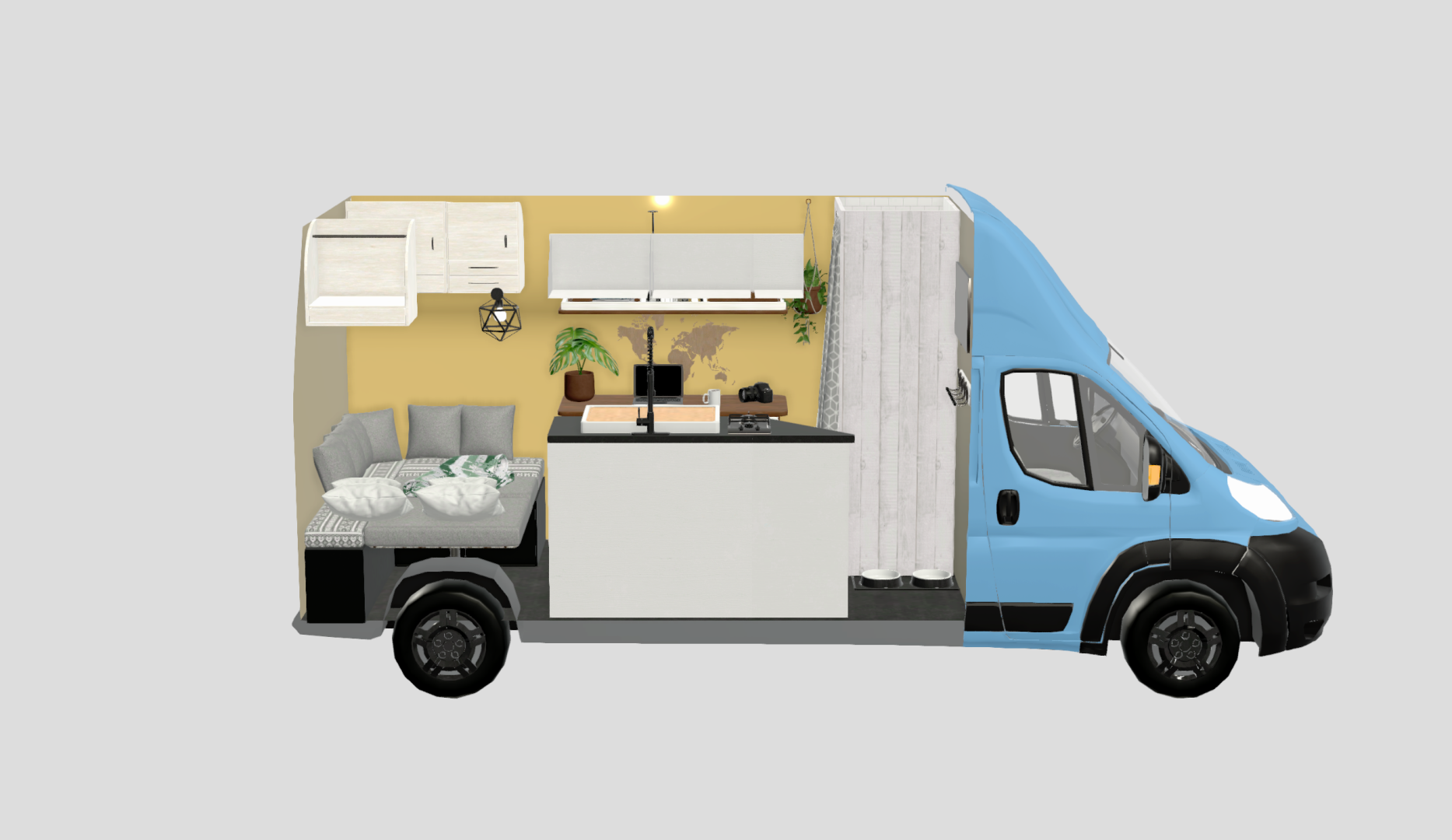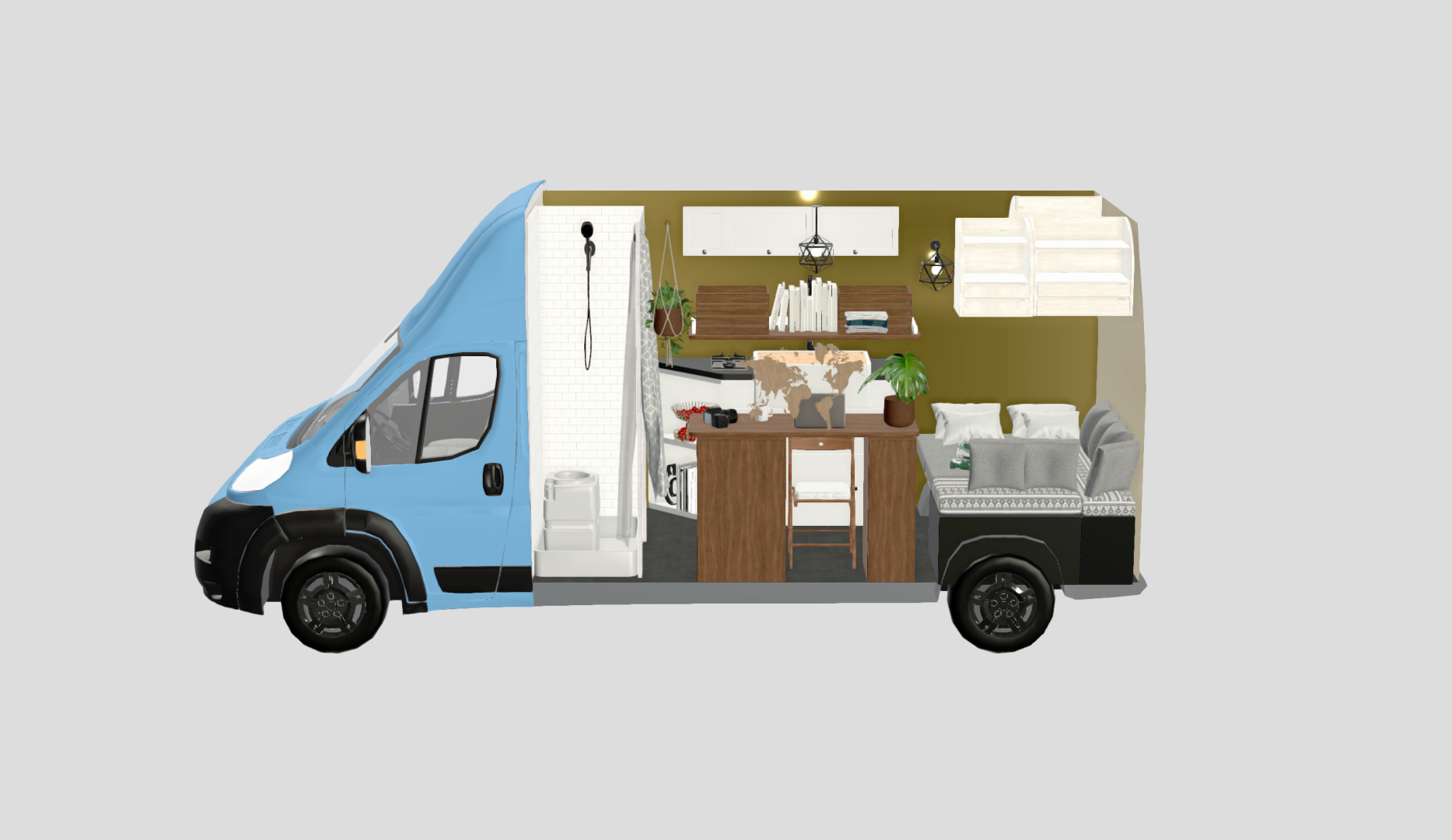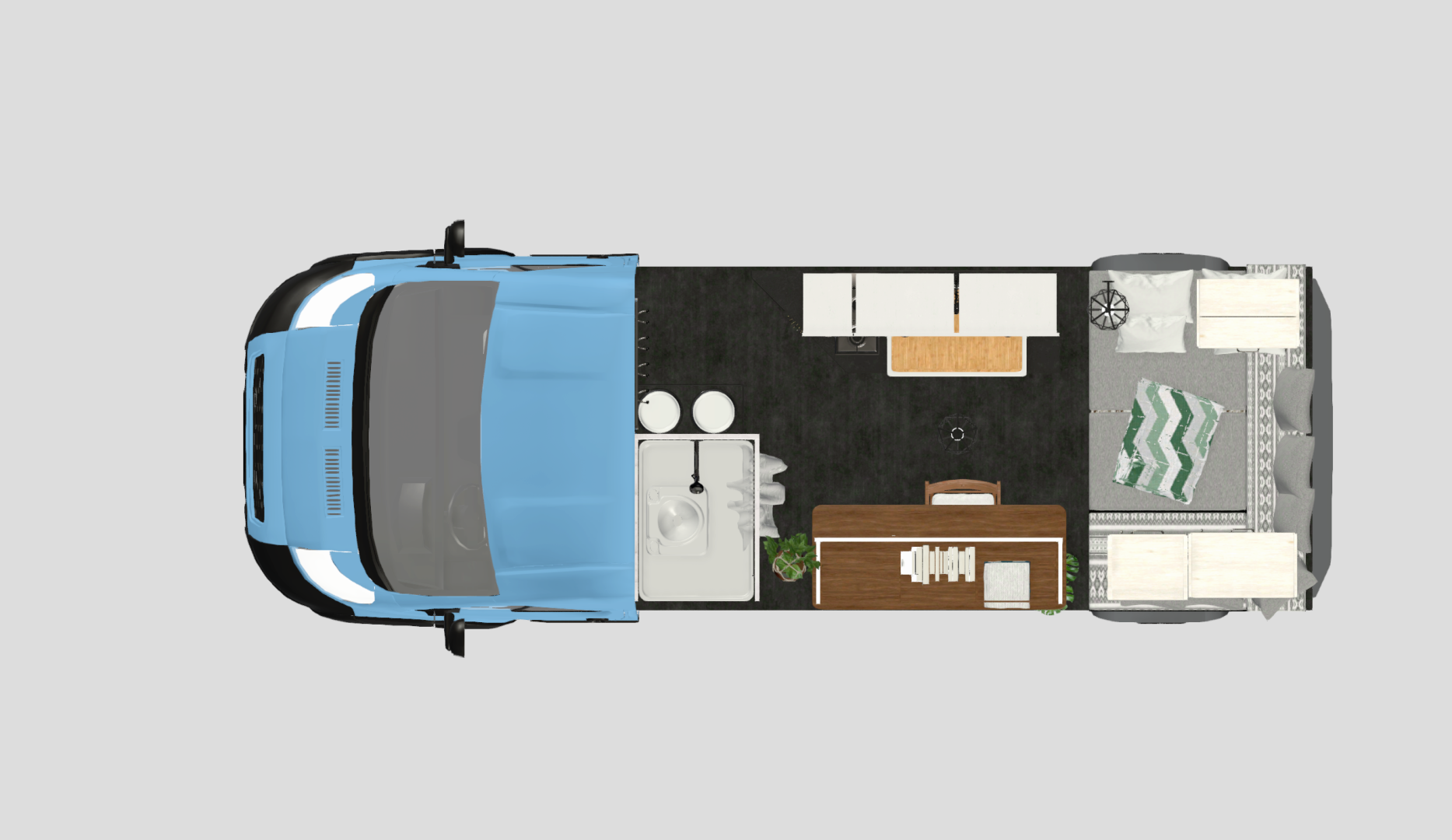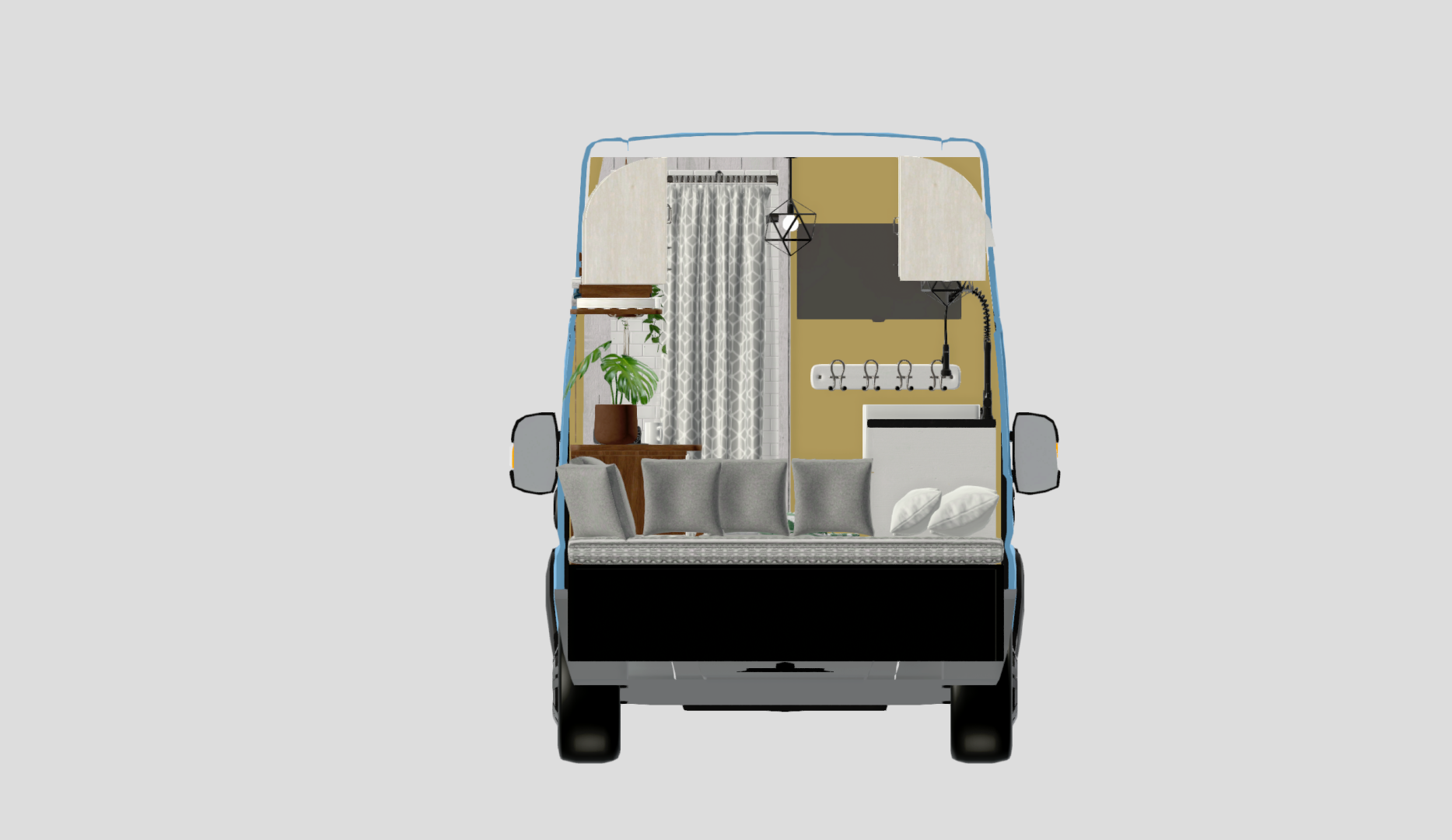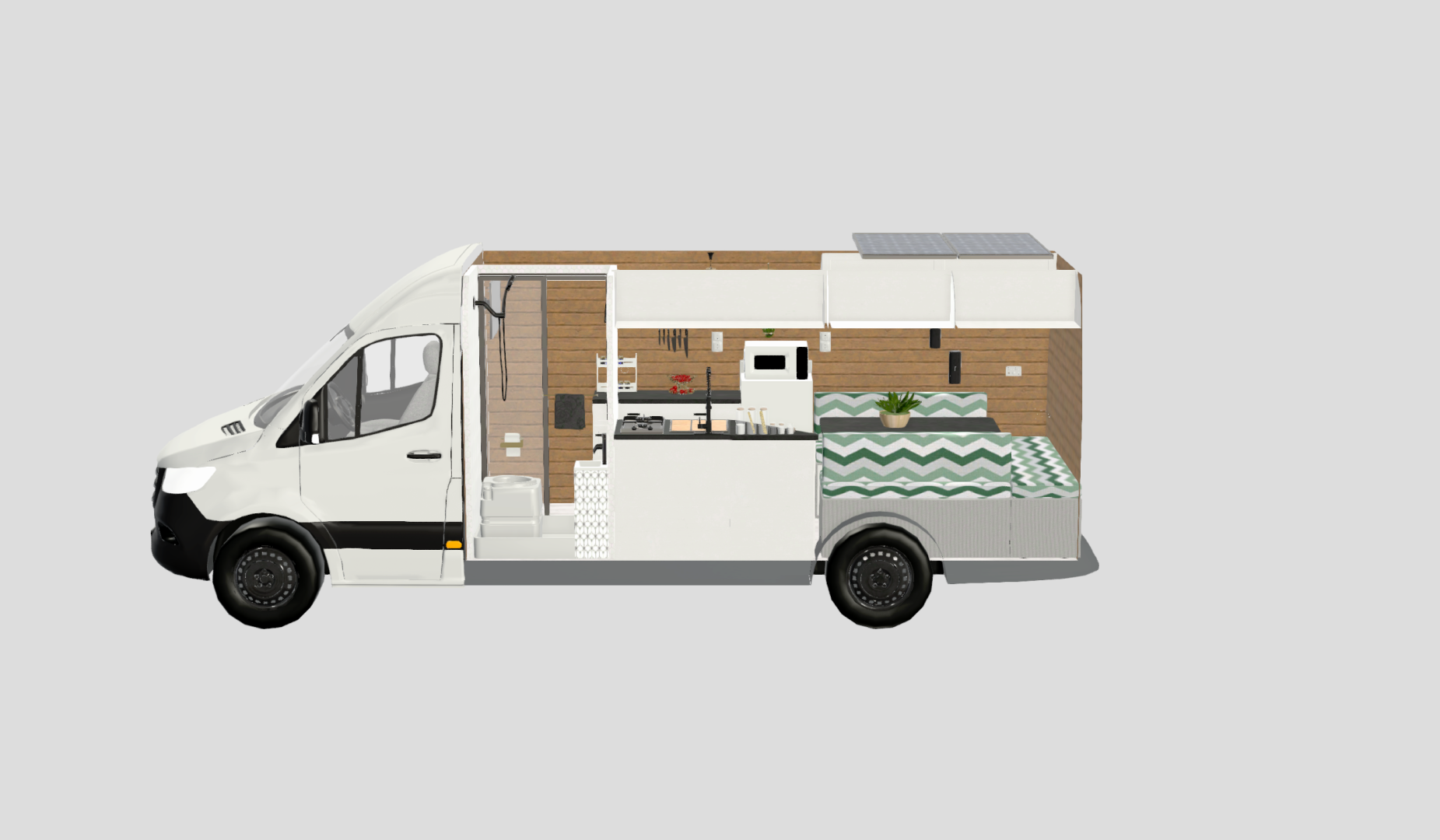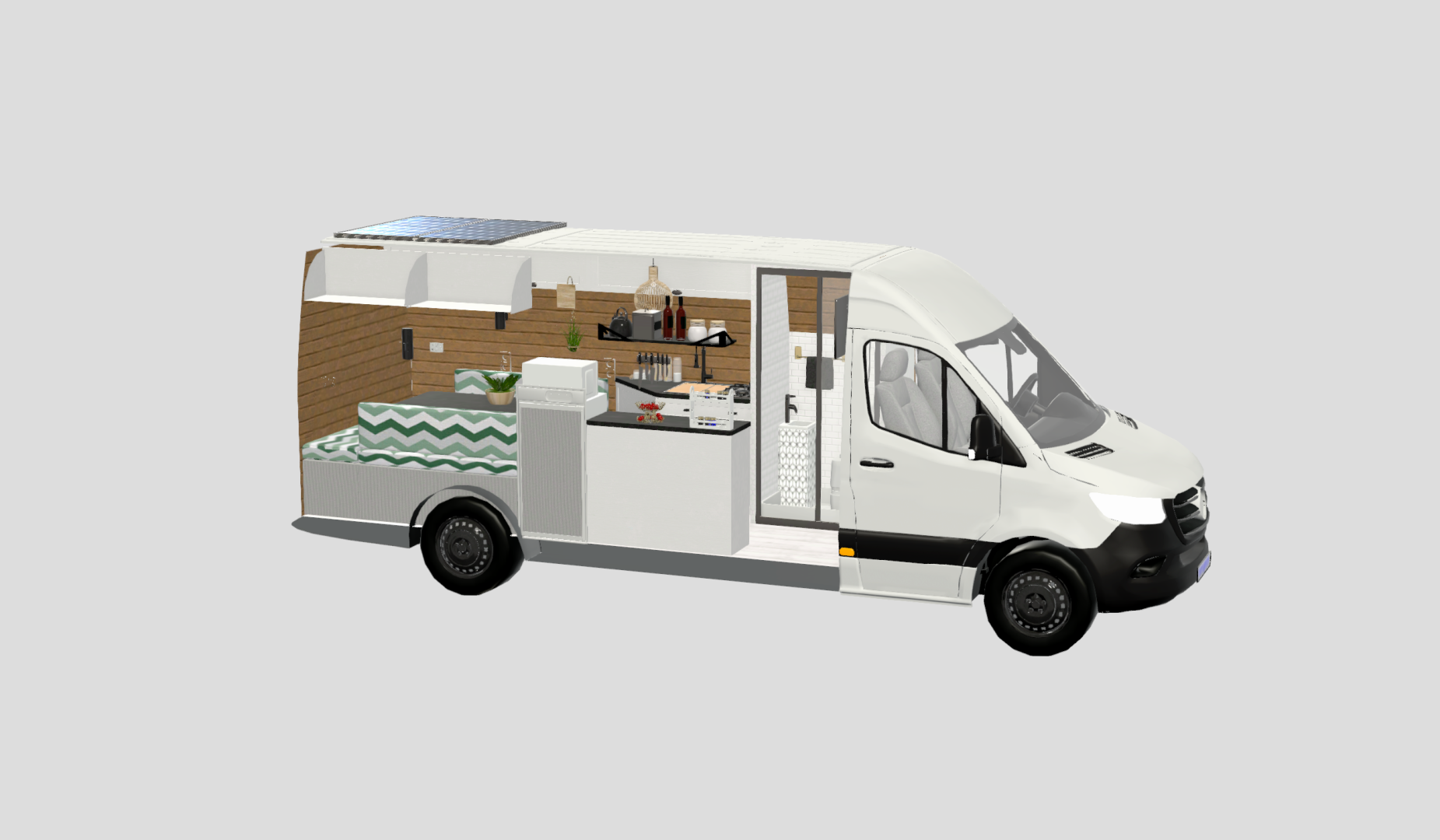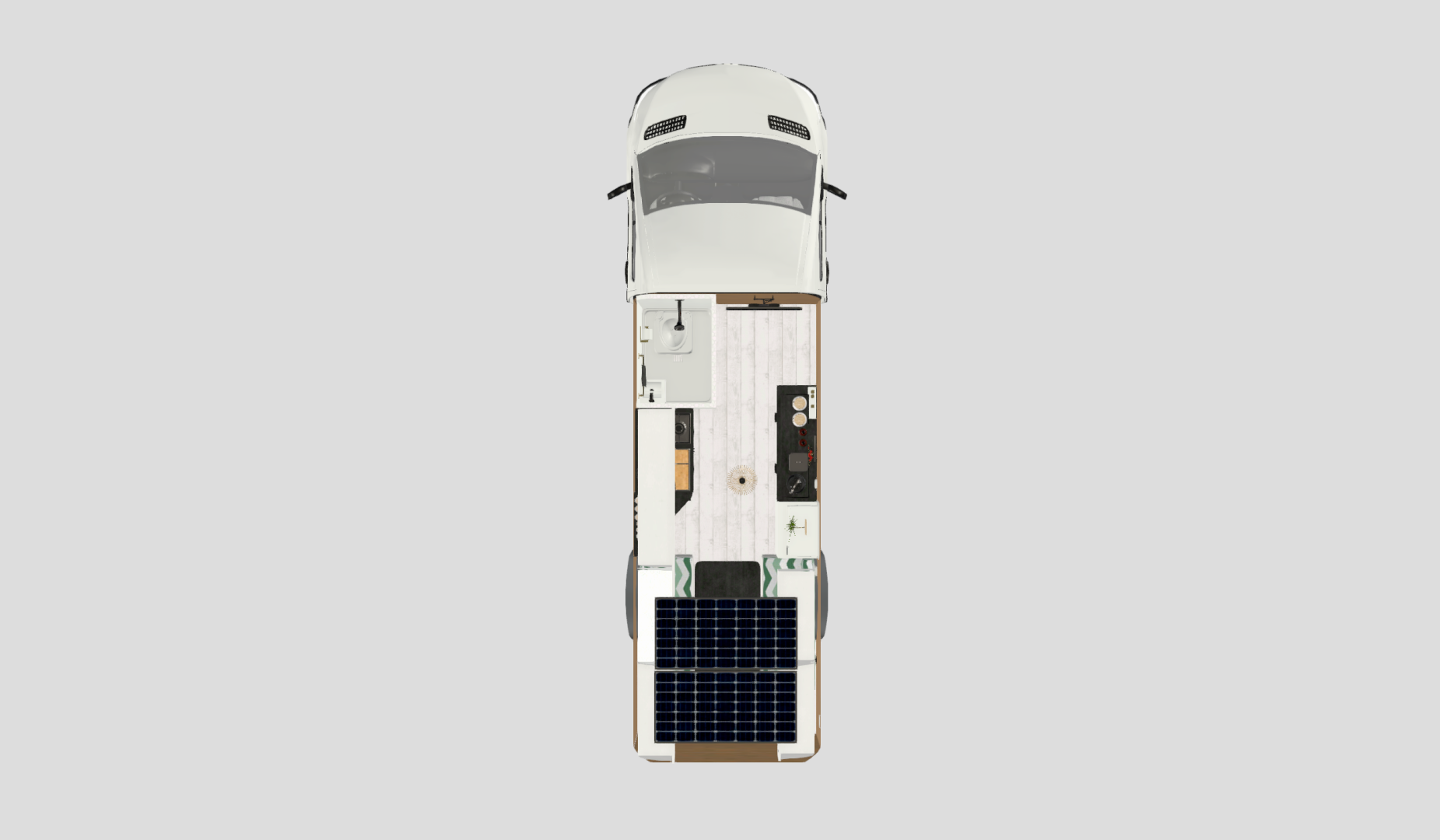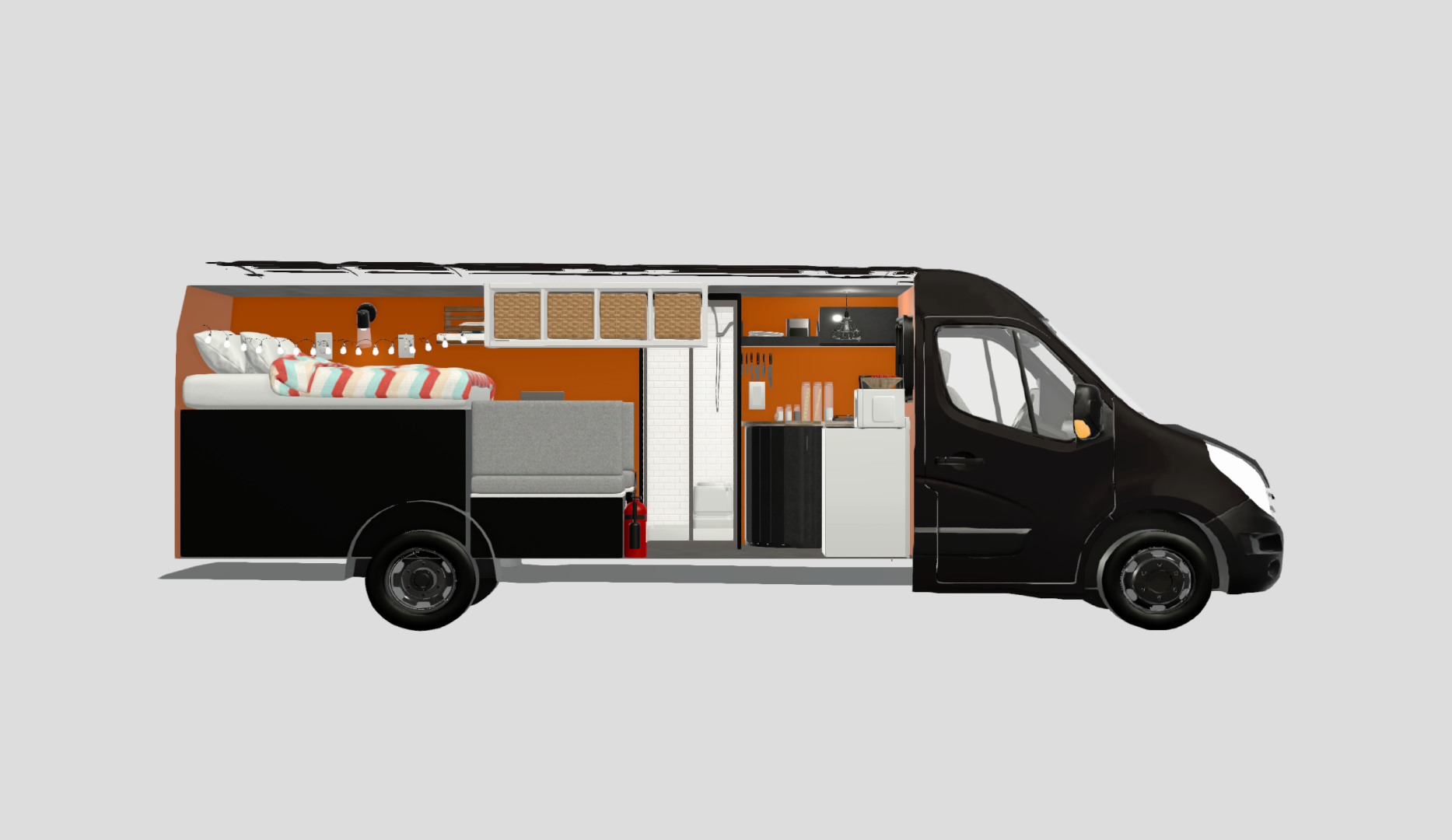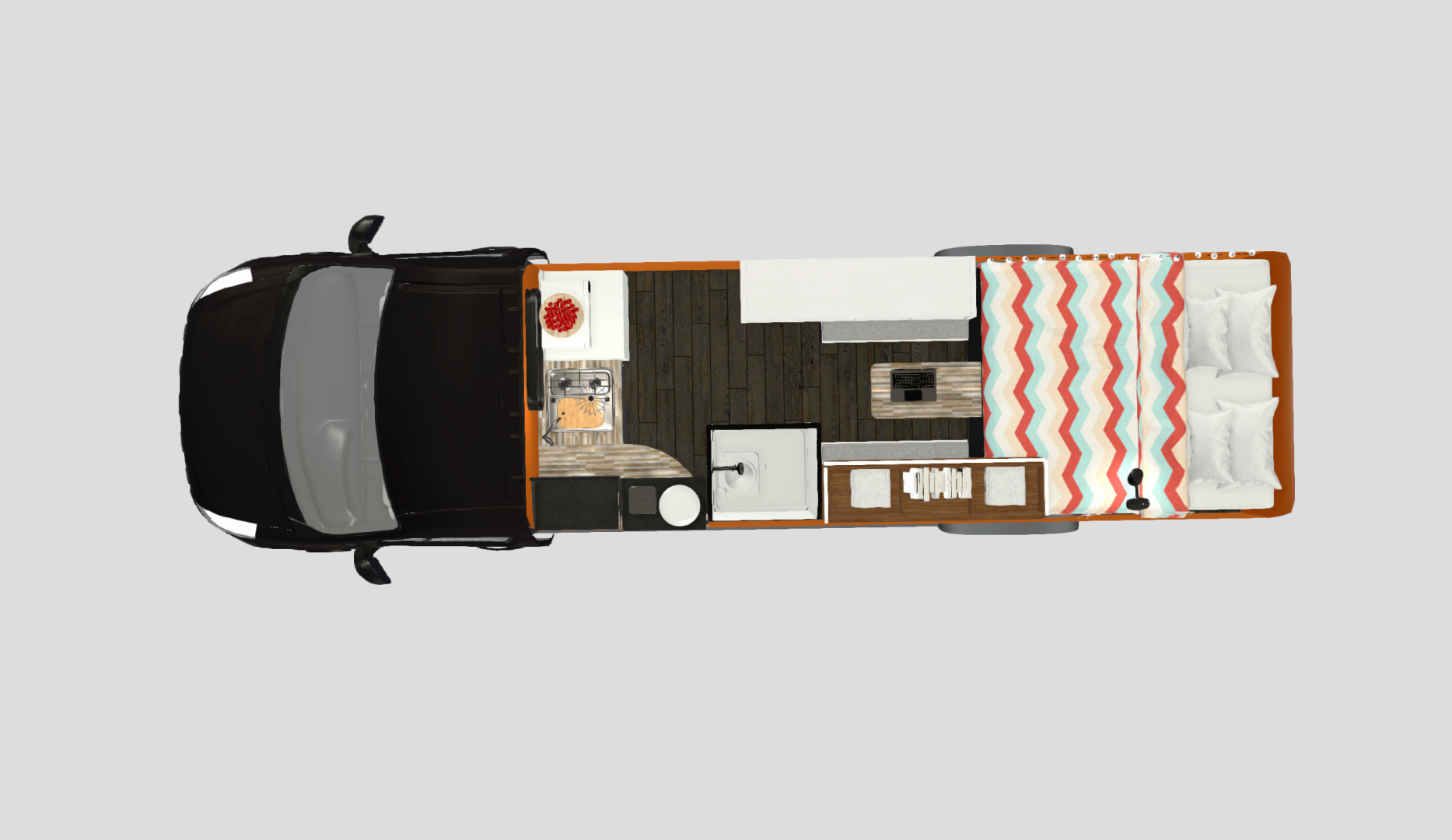Time Management Reflection
At the beginning of the project, I anticipated that using 3D models would significantly enhance the user experience by providing an immersive and visually engaging way to explore camper van conversions. Initially, I attempted to model the vans in Blender, believing this would give me full creative control over the design. However, I quickly realised that my 3D modelling skills were not at a level that would allow me to complete the models efficiently within my timeframe. Blender’s complexity and the steep learning curve made it clear that I needed an alternative approach to stay on schedule.
I purchased VanSpace 3D, a software specifically designed for van conversions to streamline the process. This decision allowed me to focus on the interior layouts rather than struggling with modelling from scratch. VanSpace 3D provided pre-made components, which helped me visualise and refine the designs more quickly. However, an unexpected issue arose—I discovered that the software does not allow for model exports, which I had planned to integrate into my augmented reality experience. This limitation forced me to reconsider how I would incorporate my models into the app, adding an extra layer of problem-solving to my workflow.
Despite these challenges, the experience has reinforced the importance of flexibility and adaptability in project management. While my initial time estimates did not account for these setbacks, I adjusted my approach to keep the project moving. I will continue exploring ways to use the VanSpace 3D models effectively, whether through high-quality renders, interactive walkthroughs, or alternative modelling techniques.
Progress Meeting Reflection
Regularly presenting my work to both Yang and Rob has been an essential part of refining my project. Their feedback has helped me identify key areas for improvement and ensure that my designs meet a high standard.
Recently, Yang provided valuable insights regarding my 3D model, pointing out the need for re-topology to enhance the overall quality. She noted that the current rendering results show noticeable artifacts, which could impact the final visual output. To address this, she recommended ensuring that each individual polygon mesh contains fewer than four vertices, as this approach helps improve topology and resolves rendering issues.
Additionally, Yang emphasized that while topology plays a crucial role, understanding the texturing and rendering process is equally important. She suggested exploring additional resources on YouTube to deepen my knowledge in these areas. Moving forward, I plan to apply these recommendations to refine my 3D model, ensuring a smoother and more professional result.





